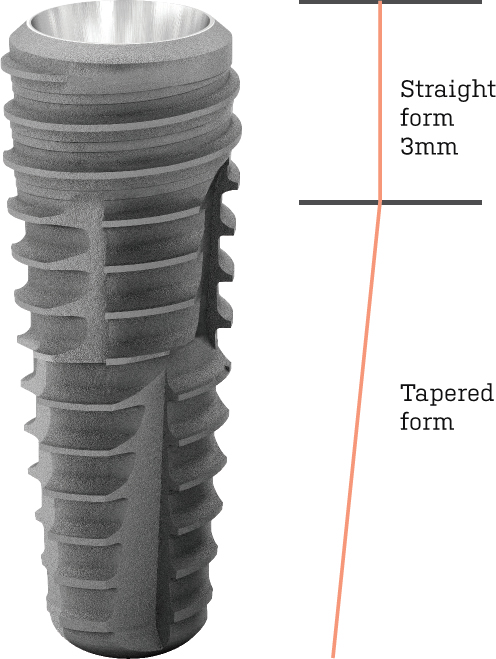Table Of Content

Engagement in hybrid designs and implementation research is not without its challenges. Common problems within the field include disagreements over the quantity of evidence needed to begin including an implementation focus. It can also be challenging to determine the acceptable amount of variability from the original effectiveness trials and the current context in which one intends to conduct an implementation study (i.e., how different is too different to conduct a hybrid study?). As implementation science has advanced, it is not sufficient to haphazardly select implementation strategies to include in implementation studies. More emphasis is being placed on selecting evidence-based implementation strategies and providing rationale for the selection of strategies based on factors of the context, recipient, and innovation as well as theory and stakeholder input.
California’s EV charging network could use a jolt, a trip down I-5 shows

We recommend that future hybrid research seeks to document in both quantitative and qualitative ways the extent and manner in which translation has been sped. As of now, we can only say that these hybrids have the potential to speed and improve translation. Further, the relative speed of translation is not usually included in traditional cost effectiveness analyses, and it would be interesting to explore the potential benefits of hybrid designs from this perspective. However, with increased recognition of the need to adapt interventions for context and given vast potential contextual differences, we view that hybrid 3 designs should perhaps become more of the “default” option, as opposed to an implementation trial. This design option is also appropriate when there is a high-level need or call for implementation despite limited evidence base (e.g., strong momentum within a healthcare system or a formal mandate). It should be noted here as well that in seeking research funding for a large-scale hybrid 3 design (e.g., in an NIH R01 mechanism), it is usually expected, like any other intervention study, to have already demonstrated feasibility in pilot testing of the strategy or strategies under investigation.
These Are the Biggest Hair and Makeup Trends for Brides in 2022
Please be aware that this might heavily reduce the functionality and appearance of our site. Maria and Emily agree to try arrangements that meet these needs for one month. After this trial period, Emily feels less stressed, and colleagues and clients are pleased with improved documentation.
Type 2

Elements such as greenery, balanced light, and natural air can enhance employees’ health. Actually escaping even in the office allows people to restore and recharge. Companies do this to try and keep down the amount of space they have to rent. Social spaces, Meet spaces, Focus spaces, and Balance spaces each cater to specific needs and become the cornerstone of purposeful office environments. A mixed media collage is a type of illustration that is great for speed but also for informal presentations where broad ideas and atmosphere are the focus.
DFDS signs design contract for hybrid ferries for Channel Islands bid - Ship Technology
DFDS signs design contract for hybrid ferries for Channel Islands bid.
Posted: Thu, 25 Apr 2024 13:28:20 GMT [source]
CHALLENGES IN LINKING CLINICAL AND IMPLEMENTATION RESEARCH DESIGNS
Such blending can provide benefits over pursuing these lines of research independently; for example, more rapid translational gains in clinical intervention uptake, more effective implementation strategies, and more useful information for researchers and decision makers. This study describes the elements of such “effectiveness-implementation hybrid designs,” discusses the indications for such approaches, outlines the design decisions that must be faced in developing such protocols, and provides several examples of funded hybrid studies to illustrate the concepts. A hybrid type 2 design is ideal when studying interventions that already have evidence of effectiveness in other settings or populations, but not in either the context or population in the current trial resulting in uncertainty that there would be a similar clinical benefit (Aarons et al., 2017). For example, there may be data to support the effectiveness of CBT for insomnia in mental health settings, but not yet in primary care settings.
Article Access Statistics
Cars like Cortés’ will only delay California’s ambitious transition to an all-electric fleet, they say, because too many owners don’t bother to plug them in. HDS is known for its expertise and many patented innovative designs in the advanced battery industry. All rights are reserved, including those for text and data mining, AI training, and similar technologies.
In a hybrid type 2 design, there is a dual focus on the clinical intervention and implementation related factors. There is no clear designation of how the focus should be allotted to each aspect (e.g., 50/50, 60/40). In hybrid type 2 designs, it is important to have an explicitly described implementation strategy that is thought to be plausible in the real world. Another difference is that type 2 designs always need explicit measurement of implementation outcome (e.g., adoption, fidelity; see Smith et al. 2019 this issue for more on implementation outcomes). It is important to be clear about the intervention components versus the implementation strategy components. For example, in a study where an evidence-based practice is delivered over the phone, the delivery of the intervention by phone is a component of the intervention that will require implementation strategies to support its adoption rather than the mode of delivery being an implementation strategy in itself.
‘Rivers in the sky’ have drenched California, yet even more extreme rains are possible
The second level of the study assessed organizational and provider factors that could impact implementation and effectiveness of the intervention. They also actively tested implementation strategies (e.g., fidelity checks, train the trainer model) with the intervention group to assess their impact on fidelity and maintenance of the clinical intervention (Pitpitan et al., 2018). The study utilized both qualitative interviews and quantitative assessment to explore providers’ attitudes and beliefs towards their work, the organization, and the intervention and their impact on program effectiveness. They also utilized qualitative data to culturally adapt the intervention and mixed methods to measure the social influences within the organization that may impact attitudes towards the intervention.
Databases
Currently, the 2024 Lexus ES tops the list of KBB.com’s best luxury hybrid cars. After hours of test driving and analysis, our experts assigned the ES a rating of 4.7 out of 5 stars. Rather than pulling random numbers out of the air or off some meaningless checklist, KBB’s editors rank a vehicle to where it belongs in its class. Before any car earns its KBB rating, it must prove itself to be better (or worse) than the other cars it’s competing against as it tries to get you to spend your money buying or leasing.
By utilizing both qualitative and quantitative methods, the investigators were able to corroborate, compare, and expand their findings and identify barriers to and facilitators of intervention fidelity. To more directly impact fidelity, they utilized a “train-the-trainer” approach that began with an intensive training schedule comprised of in vivo coaching, direct observation, and fidelity checklists completed by the participants and counselors that was gradually tapered over time. Patterson’s design is representative of a hybrid type 2 design because it includes explicit measurement of fidelity to the intervention resulting from the use of pre-selected implementation strategies (Patterson et al., 2012; Pitpitan et al., 2018). Hybrid effectiveness-implementation designs (Curran et al., 2012) offer a potential solution to this problem, as they were codified to promote examination of both effectiveness and implementation outcomes within a study. Broadly, the word “design” refers to the planned set of procedures to 1) select units/participants for study; 2) assign these to or measure their naturally chosen conditions; and 3) evaluate before, during, and after assignment in the conduct of the study. Thus, many types of randomized and non-randomized trial designs can be used in the context of a hybrid depending on the specific aims.
When designing a hybrid study of any type, it is important to use a framework (e.g., CFIR, PRECIS-2) to guide the focus of the study and reporting of outcomes (e.g., RE-AIM). For additional guidance on implementation theories, models, and frameworks, see Damschroder et al. (2019) in this issue. When examining factors that impact implementation, one should consider barriers and facilitators at multiple levels of an organization, such as consumer, staff/provider, clinic, and organization levels.
In addition, there are conditions under which a Hybrid 1 study would seem premature or less feasible—for example, in clinical effectiveness trials with major safety issues, complex comparative effectiveness trials, and “pilot” or very early clinical effectiveness trials. In general, however, we argue that a Hybrid 1 is particularly “low risk” with the potential for high reward given that the implementation research portion is essentially an “add-on” to a routinely designed and powered clinical trial. When moving into the next Hybrid type, there are more complexities to consider and trade-offs to be weighed. As a result, the time lag between development of an evidence-based intervention and routine uptake in the community can take a significant amount of time.
This post-pandemic corporate space integrates multiple programs in one open space, ranging from a coffee station and meeting rooms, to vegetated zones and comfortable sitting areas. Allows for improved ad effectiveness and measurement through Meta’s Conversions API, ensuring privacy-compliant data sharing. Differentiates real visitors from automated bots, ensuring accurate usage data and improving your website experience.

No comments:
Post a Comment